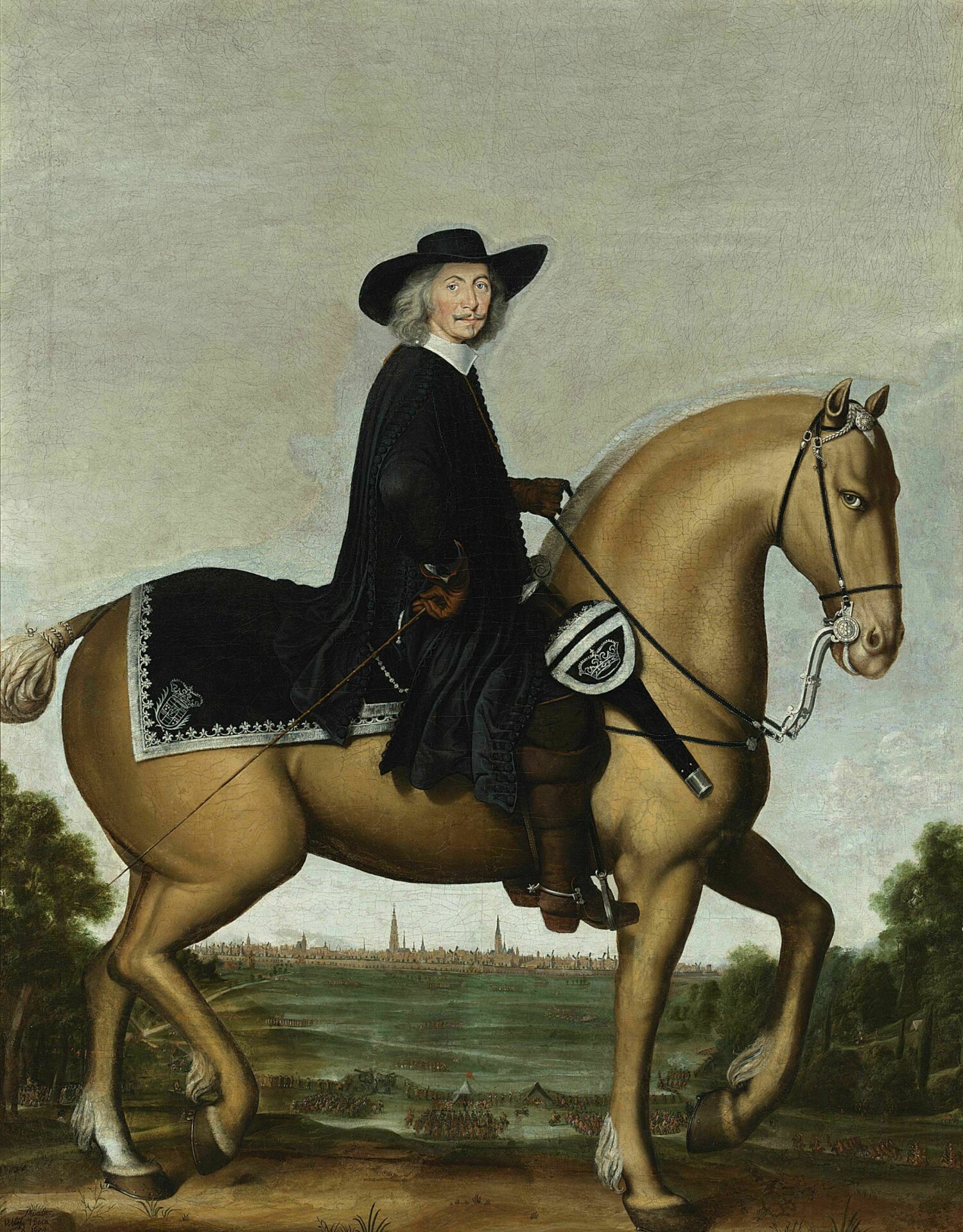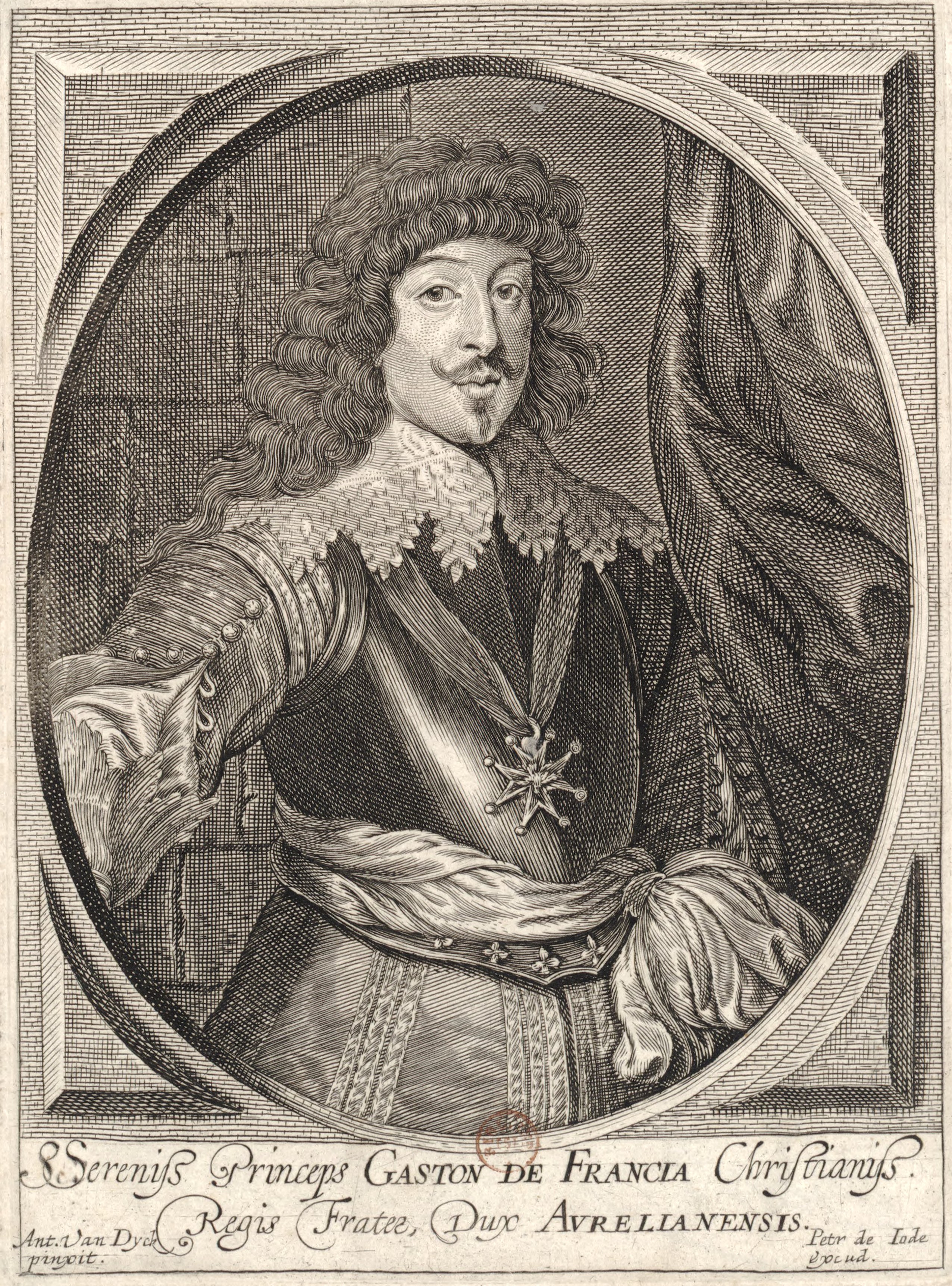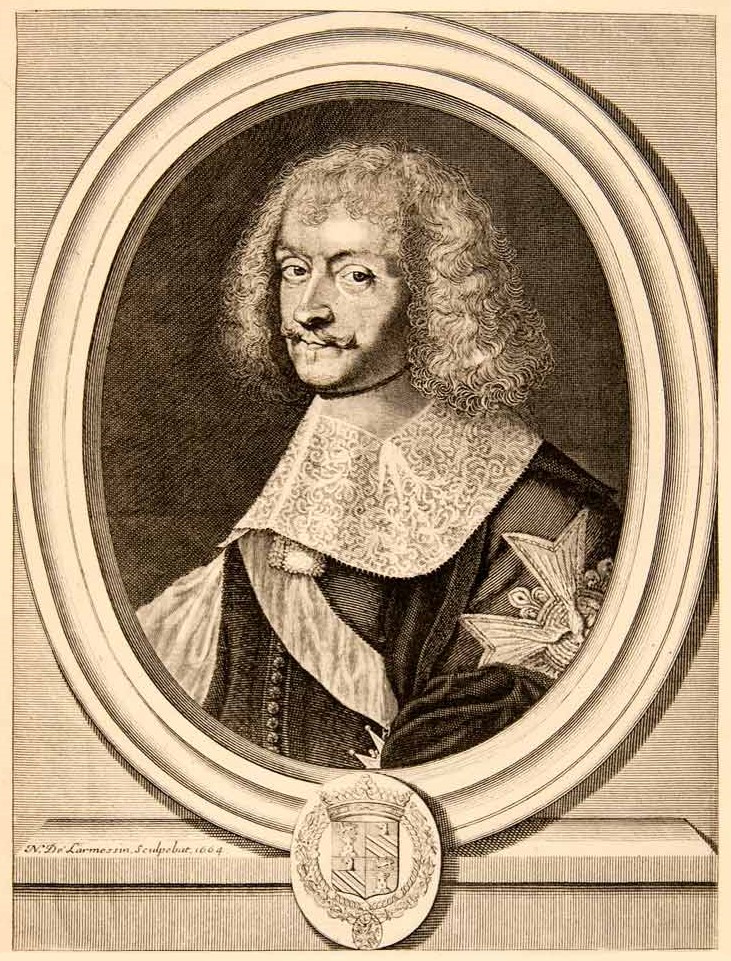|
Wilhelm Egon Von Fürstenberg
Wilhelm Egon von Fürstenberg-Heiligenberg (2 December 162910 April 1704) was a German count and later prince of Fürstenberg-Heiligenberg in the Holy Roman Empire. He was a clergyman who became bishop of Strasbourg, and was heavily involved in European politics after the Thirty Years' War. He worked for the Archbishop-Elector of Cologne and Louis XIV of France at the same time, and was arrested and tried for treason for convincing the Elector to fight on the opposite side of a war from the Empire. Early life Wilhelm was a younger son of Egon VIII of Fürstenberg-Heiligenberg and Anna Maria of Hohenzollern-Hechingen. His father died in the Thirty Years' War in 1635, when Wilhelm was young. Starting in 1637, Wilhelm attended the Gymnasium Tricoronatum with his elder brother, Franz Egon. There they met Maximilian Heinrich of Bavaria and formed friendships that would shape all their careers. Wilhelm then went on to study in Louvain in 1643, and after that to study theology in ... [...More Info...] [...Related Items...] OR: [Wikipedia] [Google] [Baidu] |
Fürstenberg (princely Family)
Fürstenberg (also Fuerstenberg and Furstenberg) may refer to: Historical states * Fürstenberg-Baar, county (1441–1559) * Fürstenberg-Blumberg, county (1559–1614) * Fürstenberg-Donaueschingen, county (1617–1698) * Fürstenberg-Fürstenberg, county (1408–1441, 1704–1716) and principality (1716–1804) * Fürstenberg-Geisingen, county (1441–1483) * Fürstenberg-Heiligenberg, county (1559–1664) and principality (1664–1716) * Fürstenberg-Messkirch, county (1614–1716) and principality (1716–1744) * Fürstenberg-Möhringen, county (1599–1641) * Fürstenberg-Pürglitz, principality (1762–1806) * Fürstenberg-Stühlingen, county (1614–1704) * Fürstenberg-Taikowitz, county (1759–1806) * Fürstenberg-Weitra, county (1705–1806) * Fürstenberg-Wolfach, county (1408–1490) * Principality of Fürstenberg, county (1250–1408) and principality Cities and municipalities * Fürstenberg/Havel, a city in the district of Oberhavel, Brandenburg, Germany * Fürst ... [...More Info...] [...Related Items...] OR: [Wikipedia] [Google] [Baidu] |
Fronde
The Fronde () was a series of civil wars in France between 1648 and 1653, occurring in the midst of the Franco-Spanish War, which had begun in 1635. King Louis XIV confronted the combined opposition of the princes, the nobility, the law courts ('' parlements''), as well as most of the French people, and managed to subdue them all. The dispute started when the government of France issued seven fiscal edicts, six of which were to increase taxation. The ''parlements'' resisted and questioned the constitutionality of the King's actions and sought to check his powers. The Fronde was divided into two campaigns, the Parlementary Fronde and the Fronde of the Princes. The timing of the outbreak of the Parlementary Fronde, directly after the Peace of Westphalia (1648) that ended the Thirty Years' War, was significant. The nuclei of the armed bands that terrorized parts of France under aristocratic leaders during that period had been hardened in a generation of war in Germany, where tro ... [...More Info...] [...Related Items...] OR: [Wikipedia] [Google] [Baidu] |
Bernhard Von Galen
Christoph Bernhard Freiherr von Galen (12 October 1606, Drensteinfurt – 19 September 1678) was Prince-bishop of Münster. He was born into a noble Westphalian family. Background, education and conversion to Roman Catholicism Christoph Bernhard von Galen was born on 12 October 1606 to Lutheran parents of the aristocratic von Galen family. His father, Dietrich von Galen, had estates in the Baltic region and bore the title of Marshal of Courland. During a state assembly in Münster, Dietrich von Galen killed the Münster hereditary marshal, Gerd Morrien zu Nordkirchen, on 15 February 1607, and consequently had to spend twelve years in detention at Bevergern Castle. Because his wife accompanied him voluntarily, in 1616 the young Christoph Bernhard was placed under the care of his uncle, the Canon of Münster, Heinrich von Galen. He gave him a Catholic education by Jesuits at the Paulinum in Münster. In 1619, at 13, he took his first job working for the cathedral chapter in ... [...More Info...] [...Related Items...] OR: [Wikipedia] [Google] [Baidu] |
Anne Marie Louise D'Orléans, Duchess Of Montpensier
Anne Marie Louise d'Orléans, Duchess of Montpensier, (, – ) known as ''La Grande Mademoiselle'', was the only daughter of Gaston d'Orléans with his first wife, Marie de Bourbon, Duchess of Montpensier. One of the greatest heiresses in history, she died unmarried and childless, leaving her vast fortune to her cousin Philippe I, Duke of Orléans. After a string of proposals from various members of European ruling families, including Charles II of England, Afonso VI of Portugal, and Charles Emmanuel II of Savoy, she eventually fell in love with the courtier Antoine Nompar de Caumont and scandalised the court of France when she asked Louis XIV for permission to marry him, as such a union was viewed as a '' mésalliance''. She is best remembered for her role in the '' Fronde'' and her role in bringing the famous composer Jean-Baptiste Lully to the king's court,Cowart, p 19 and her ''Mémoires''. Early years Anne Marie Louise d'Orléans was born at the Palais du Louv ... [...More Info...] [...Related Items...] OR: [Wikipedia] [Google] [Baidu] |
Charles IV, Duke Of Lorraine
Charles IV (5 April 1604, Nancy – 18 September 1675, Allenbach) was Duke of Lorraine from 1624 until his death in 1675, with a brief interruption in 1634, when he abdicated under French pressure in favor of his younger brother, Nicholas Francis. Life He came to lose his duchy because of his notionally anti-French policy; in 1633, French troops invaded Lorraine in retaliation for Charles's support of Gaston d'Orléans—who repeatedly plotted against Richelieu's governance of France under the childless Louis XIII and treated dangerously with its enemies as a young heir presumptive—and Richelieu's policies were always anti-Habsburg so as to increase the strength and prestige of France at the expense of the two dynasties. Gaston d'Orléans, frequently sided with either branch of the Habsburg family against Richelieu, who was ''de facto'' ruler of France as its Chief Minister, and had to flee several times to avoid charges and trial for treason. His allies and confederates ge ... [...More Info...] [...Related Items...] OR: [Wikipedia] [Google] [Baidu] |
Treaty Of The Pyrenees
The Treaty of the Pyrenees (french: Traité des Pyrénées; es, Tratado de los Pirineos; ca, Tractat dels Pirineus) was signed on 7 November 1659 on Pheasant Island, and ended the Franco-Spanish War that had begun in 1635. Negotiations were conducted on Pheasant Island, situated in the middle of the Bidasoa River on the border between the two countries, which has remained a French-Spanish condominium ever since. It was signed by Louis XIV of France and Philip IV of Spain, as well as their chief ministers, Cardinal Mazarin and Don Luis Méndez de Haro. Background France entered the Thirty Years' War after the Spanish Habsburg victories in the Dutch Revolt in the 1620s and at the Battle of Nördlingen against Sweden in 1634. By 1640, France began to interfere in Spanish politics, aiding the revolt in Catalonia, while Spain responded by aiding the Fronde revolt in France in 1648. During the negotiations for the Peace of Westphalia in 1648, France gained the Sundgau and ... [...More Info...] [...Related Items...] OR: [Wikipedia] [Google] [Baidu] |
Johann Philipp Von Schönborn
Johann Philipp von Schönborn (6 August 1605 – 12 February 1673) was the Archbishop-Elector of Mainz (1647–1673), the Bishop of Würzburg (1642–1673), and the Bishop of Worms (1663–1673). Life Johann Philipp was born in his family's manor house at Laubuseschbach (present-day Hesse) to Georg von Schönborn, a minor nobleman at the employ of the Lutheran counts of Wied. The Schönborn family had knightly rank and was first mentioned in 1275. However, by the time Johann Philipp grew up, most branches of the family had extinguished, and in fact, he and his brother were the last sprouts of the family. Laubuseschbach, Schönbornscher Hof.JPG, Birth house in Laubuseschbach In 1621, after it had been ascertained that he possessed the minimum quarters of nobility required, he was admitted as a minor canon (domizellar) by the cathedral chapter of Wurzburg Cathedral, and in 1625 by the cathedral chapter of Mainz Cathedral as well. In 1626, he received consecrati ... [...More Info...] [...Related Items...] OR: [Wikipedia] [Google] [Baidu] |
League Of The Rhine
The League of the Rhine (also known as the ''Erster Rheinbund'', First Rhine- Bund; or the ''Rheinische Allianz'' - Rhenish Alliance) was a defensive union of more than 50 German princes and their cities along the River Rhine, formed on 14 August 1658 by Louis XIV of France and negotiated by Cardinal Mazarin (the ''de facto'' prime minister of France), Hugues de Lionne and Johann Philipp von Schönborn (Elector of Mainz and Chancellor of the Empire). Aims Its intended aim was to weaken the position of the Holy Roman Emperor (then Leopold I) and to marginalise the Austrian House of Habsburg. Louis XIV had wished to be elected emperor himself, but had failed, despite the French victory at the Battle of the Dunes. The new confederation allied itself to France, swearing not to let any anti-French troops (marching to attack France in the Spanish Netherlands or elsewhere) pass through their territory, thus protecting France's eastern frontier with a "military border" running alon ... [...More Info...] [...Related Items...] OR: [Wikipedia] [Google] [Baidu] |
Leopold I, Holy Roman Emperor
Leopold I (Leopold Ignaz Joseph Balthasar Franz Felician; hu, I. Lipót; 9 June 1640 – 5 May 1705) was Holy Roman Emperor, King of Hungary, List of Croatian monarchs, Croatia, and List of Bohemian monarchs, Bohemia. The second son of Ferdinand III, Holy Roman Emperor, by his first wife, Maria Anna of Spain, Leopold became heir apparent in 1654 by the death of his elder brother Ferdinand IV, King of the Romans, Ferdinand IV. Elected in 1658, Leopold ruled the Holy Roman Empire until his death in 1705, becoming the second longest-ruling Habsburg emperor (46 years and 9 months). He was both a composer and considerable patron of music. Leopold's reign is known for conflicts with the Ottoman Empire in the Great Turkish War (1683-1699) and rivalry with Louis XIV, a contemporary and first cousin (on the maternal side; fourth cousin on the paternal side), in the west. After more than a decade of warfare, Leopold emerged victorious in the east thanks to the military talents of Prince E ... [...More Info...] [...Related Items...] OR: [Wikipedia] [Google] [Baidu] |
Livre Tournois
The (; ; abbreviation: ₶.) was one of numerous currencies used in medieval France, and a unit of account (i.e., a monetary unit used in accounting) used in Early Modern France. The 1262 monetary reform established the as 20 , or 80.88 grams of fine silver. The was a gold coin of one minted in large numbers from 1360. In 1549, the was decreed a unit of account, and in 1667 it officially replaced the . In 1720, the was redefined as 0.31 grams of pure gold, and in 1726, in a devaluation under Louis XV, as 4.50516 grams of fine silver. It was the basis of the revolutionary French franc of 1795, defined as 4.5 grams of fine silver exactly. Circulating currency In France, the was worth 240 deniers (the "Tours penny"). The latter were initially minted by the abbey of Saint Martin in the Touraine region of France. Soon after Philip II of France seized the counties of Anjou and Touraine in 1203 and standardized the use of the there, the began to supersede the (Paris ... [...More Info...] [...Related Items...] OR: [Wikipedia] [Google] [Baidu] |
Hugues De Lionne
Hugues de Lionne (11 October 1611 – 1 September 1671) was a French statesman. He was born in Grenoble, of an old family of Dauphiné. Early trained for diplomacy, he fell into disgrace under Cardinal Richelieu, but his remarkable abilities attracted the notice of Cardinal Mazarin, who sent him as secretary of the French embassy to the congress of Munster, and, in 1642, on a mission to the pope. In 1646 he became secretary to the queen regent Anne of Austria; in 1653 obtained high office in the kings household; and in 1654 was ambassador extraordinary at the election of Pope Alexander VII. On the death of Ferdinand III, Hugues co-led the French effort to select an Emperor outside the Habsburg family. He and the Cardinal cultivated relationships with German nobility, including Franz Egon of Fürstenberg, prime minister of Cologne, and his brother Wilhelm. With their help, Hugues was instrumental in forming the league of the Rhine, by which Austria was cut off from the S ... [...More Info...] [...Related Items...] OR: [Wikipedia] [Google] [Baidu] |




.jpg)

